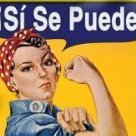Bangkok CentralWorld Witness Describes 'Molotov Cocktails'
-
Recently Browsing 0 members
- No registered users viewing this page.
Announcements
-
Topics
-
Latest posts...
-
1,941
What Movies or TV shows are you watching (2024)
Just in case you missed it: The White Lotus - S01 1080p AMZN WEBRip & S02 1080p HMAX WEBRiP https://torrentgalaxy.to/torrents.php?search=The+White+Lotus&lang=0&nox=2&nox=1#results or https://eztvx.to/search/the-white-lotus S03 (filmed in Thailand) due to be televised next year. === Very entertaining (IMO) The Summit US https://torrentgalaxy.to/torrents.php?search=The+Summit+US&lang=0&nox=2&nox=1#results Available episodes: E01,E02,E05,E06,E07 Awaiting: E08,E09,E10 Missing episodes: E03,04 -
10
Trump - just what does he have to do for his supporters to question their allegiance?
Not being an American might explain why you know nothing about why people support Trump, or voted for him that would have voted for the opposition had they been worth voting for. Your first sentence says it all about you. -
-
38
Thais in Los Angeles Protest Against PM Paetongtarn’s Visit
Donald is not going to visit, uh how did he say it .... "Thigh-land" . Sounds like a pretty cool joke except he was trying to sound out the word from a teleprompter. He has the functional education level of a 7th grader and BTW couldn't find Thailand on a map. More to the point the Thais in Los Angeles, that chose to protest the Thai PM's visit, are US citizens. They have a layer of protection that Thais in Thailand do not. Now back to FOX fantasy land. -
9
Pattaya beach turns into unregulated booze and kratom market
That is the law of Thailand. Share your illegal gains and legalize them. Until the Chinese take full control we have to suffer this corrupt regime. -
16
"Getting out of dodge" fall-out from a failed realtionship - Guide for dummies.
Just pack what you absolutely need, couple of suitcases, pay the bag fees at the airport, shut the door and leave. No one is going to chase you down in the US. Just dust yourself down and start again -
1
Here’s How You Can Get 10g of Cannabis for Free!
How do you guys dry and cure your product? I noticed lots of dispensaries that I've visited in Chiang Rai, Bangkok, Samui, Ko Phanang, etc seem to be overly dry, which affects the quality. Have you checked out the Cannatrol dryer/curer which creates a "shelf stable" product by curing by controlling vapor pressure? As a cheaper alternative, "Terp-Loc" bags inside a Wine Cooler set to 60°F, after a one week dry in your drying room. Both methods seem to deliver excellent product as demonstrated by a local dispensary here in Chiang Rai who consistently delivers 🔥. Bongs up! -
103
After A Lifetime Of Adventure, Why Is It Now So Hard To Pop Off?
In the interests of science I tried your idea last night and bu**er that for a bad idea.
-
-
Popular in The Pub
.png.3b3332cc2256ad0edbc2fe9404feeef0.png.8488ab72b8bb2e508209bfe3211b6e08.png)








Recommended Posts
Create an account or sign in to comment
You need to be a member in order to leave a comment
Create an account
Sign up for a new account in our community. It's easy!
Register a new accountSign in
Already have an account? Sign in here.
Sign In Now